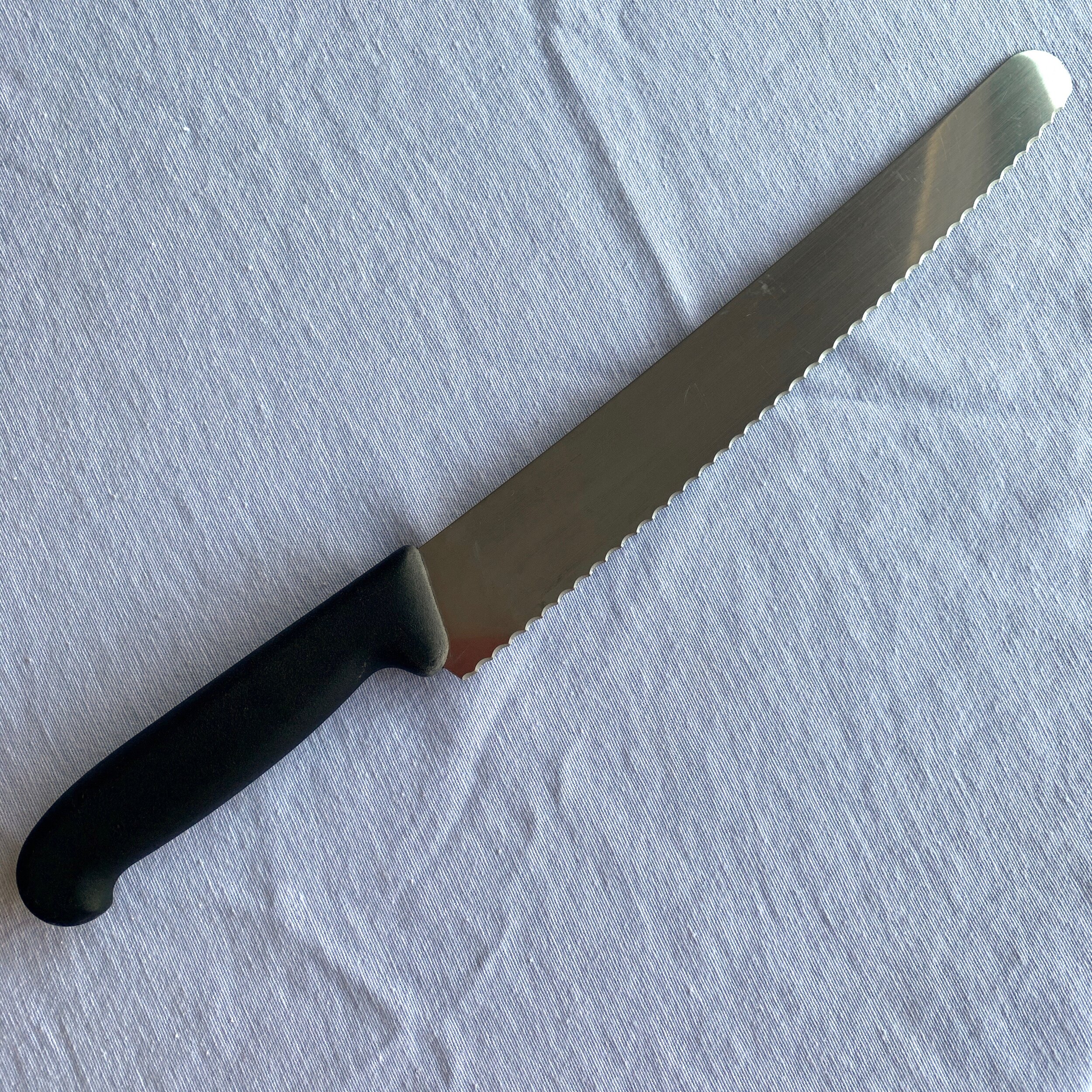Knives
They should be sharp. These are the four basic knives you can add to your repertoire.
Chef Knife
If you have one knife in your repertoire, you should have a chef knife. It should be made of stainless or carbon steel, not ceramic or plastic. The handle should be made of wood.
Two common chef’s knife styles are the French knife and the Japanese Santoku. The French knife has a pointy tip and the Santoku has a rounded tip. Traditionally, Japanese knives are sharper and thinner compared to western knives.
A standard chef’s knife is around 8 inches. However, they can range from 6 inches to 10 inches. The length of a knife comes down to feel and comfort. Obviously, if you have a smaller hand a 10 inch knife may be difficult to maneuver. If you have a larger hand a small knife may be too dainty. Personally, I use the 8 inch knife for cutting big vegetables like slicing into a spaghetti squash or a large head of cabbage. I use the santoku or the 6 inch for more precision cuts, like chopping a mirepoix for soup.
Expect to spend $75-$150 for a good quality knife.
Recommended Brands: Wusthof, Global or Shun.
Paring Knife
A paring knife is important for precision work, like supreming an orange (slicing the skin off an orange), cutting Brussel sprouts in half, quartering strawberries or slicing the skin off of a mango. This knife is not essential as most tasks can be done with a chef’s knife. However, if you find you do a lot of peeling of fruits or potatoes by hand, this knife could be handy.
When it comes to paring knives the only important feature is their sharpness. When I cook at my parent’s house they have a collection of cheap $20 paring knives. They get the job done the same as a $50 paring knife.
Victorinox Bread Knife
Everyone needs a good bread knife in their repertoire. The Victorinox probably one of my favorite knives for its functionality. I love it as I can slice thick rustic bread. I also use it for when my other knives are a little dull. I use it for all types of tomatoes, from cherry to beefsteak. It’s also great for slicing the skin off of butternut squash or cutting kabochoa squash wedges. Due to its length it is also a great knife if you needs to slice prime rib and don’t have a long slicing knife on hand.
It is a 10 inch serrated knife, meaning it has ridges and isn’t usually sharpened. This brand, Victorinox comes extremely sharp and takes years to become dull. I’ve had mine for around 8 years and its still very sharp.
There is no other bread knife I would buy. For a price of around $50 it is a solid investment and can easily be replaced if it becomes too dull.
Boning Knife
I basically use this knife to break down whole chickens. It delicately removes a breast form the bone. It can also cut through joints to remove thighs from the whole carcass. It’s a sturdy knife but allows for precision at the same time. Overall, you should be buying whole chickens and using the carcass for stock, the thighs for braises and the breasts for shredding. This knife will allow you to ditch rubbery skinless dry chicken breast for whole succulent organic sustainably raised poultry.
This knife can also double as a pairing knife as it works great for supreming oranges. I’m really into supreming oranges.
On Sharpening Knives
I’ve done it all. I’ve spent hours using a wet stone and I’ve dropped my knives off at some guy’s house. What is important is that you have sharp knives! With dull knives, you are more likely to cut yourself. Also a dull knife forces you to use more pressure, which can result in back pain.
The frequency of how often you sharpen your knives depends on how often you use your knives. I recommend finding someone to sharpen your knives at least once a year. Make sure this person is reputable and will not grind down or scratch your knives, especially if you have invested in your knives. Kitchen supply stores or knife stores usually have reputable knife sharpeners.
In-between sharpening use a honing steel or diamond steel.
You can use a wet stone. However, it takes a lot of practice to get the angle perfect and in the process you could end up scratching your knife.





